- Clone
- NLDC-145 (See other available formats)
- Regulatory Status
- RUO
- Other Names
- DEC-205
- Isotype
- Rat IgG2a, κ
- Ave. Rating
- Submit a Review
- Product Citations
- publications
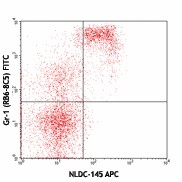
-

C57BL/6 bone marrow cells stained with Gr-1 (RB6-8C5) FITC and NLDC-145 APC -

C57BL/6 bone marrow cells stained with Gr-1(RB6-8C5) FITC and rat IgG2a APC isotype control
| Cat # | Size | Price | Quantity Check Availability | Save | ||
|---|---|---|---|---|---|---|
| 138205 | 25 µg | 120€ | ||||
| 138206 | 100 µg | 271€ | ||||
CD205, also known as DEC-205, is a 205 kD integral membrane protein homologous to the macrophage mannose receptor. It is a type I cell surface protein that belong to the C-type lectin family. CD205 is expressed at high levels by dendritic cells and thymic epithelial cells. It is also expressed by a number of other cell types, such as B lymphocytes, macrophages, Langerhans cells, bone marrow stromal cells, granulocytes, epithelial cells of pulmonary airways, and the capillaries of the brain. CD205 is a novel endocytic receptor used by dendritic cells and thymic epithelial cells to direct captured antigens from the extracellular space to specialized antigen processing. It mediates antigen uptake and presentation and cross-presentation to T cells. It has been reported that CD205 acts as a recognition receptor for dying cells, potentially provides an important pathway for the uptake of self-antigen in the intrathymic environment, and is involved in peripheral tolerance. Antibody-mediated antigen-targeting via the DEC-205 receptor increases the efficiency of vaccination for T cell immunity.
Product DetailsProduct Details
- Verified Reactivity
- Mouse
- Antibody Type
- Monoclonal
- Host Species
- Rat
- Immunogen
- Mouse lymph node tissue
- Formulation
- Phosphate-buffered solution, pH 7.2, containing 0.09% sodium azide.
- Preparation
- The antibody was purified by affinity chromatography and conjugated with APC under optimal conditions.
- Concentration
- 0.2 mg/ml
- Storage & Handling
- The antibody solution should be stored undiluted between 2°C and 8°C, and protected from prolonged exposure to light. Do not freeze.
- Application
-
FC - Quality tested
- Recommended Usage
-
Each lot of this antibody is quality control tested by immunofluorescent staining with flow cytometric analysis. For flow cytometric staining, the suggested use of this reagent is ≤0.06 µg per million cells in 100 µl volume. It is recommended that the reagent be titrated for optimal performance for each application.
- Excitation Laser
-
Red Laser (633 nm)
- Application Notes
-
Additional reported applications (for relevant formats) include: immunohistochemical staining of acetone-fixed frozen sections1, Western Blot1-3, immunoprecipitation of bone marrow dendritic cell extracts2, and spatial biology (IBEX)6,7.
- Application References
-
- Witmer-Pack MD, et al. 1995. Cell. Immun. 163:157. (IHC, WB)
- Swiggard WJ, et al. 1995. Cell. Immun. 165:302. (WB, IP)
- Bonifaz LC, et al. 2004. J. Exp. Med. 199:815. (WB)
- Yamazaki S, et al. 2002. J. Immunol. 181:6923. (FC)
- Bankoti J, et al. 2010. Toxicol. Sci. 115:422. (FC)
- Radtke AJ, et al. 2020. Proc Natl Acad Sci U S A. 117:33455-65. (SB) PubMed
- Radtke AJ, et al. 2022. Nat Protoc. 17:378-401. (SB) PubMed
- Product Citations
-
- RRID
-
AB_10613641 (BioLegend Cat. No. 138205)
AB_10613641 (BioLegend Cat. No. 138206)
Antigen Details
- Structure
- A 205 kD type I tramsmembrane protein belonging to the C-type lectin family and homologous to the macrophage mannose receptor.
- Distribution
-
Expressed at high levels by dendritic cells and thymic epithelial cells. Also expressed by B lymphocytes, macrophages, Langerhans cells, bone marrow cells and epithelial cells.
- Function
- Mediates endocytosis, antigen uptake, presentation, and cross-presentation to T cells.
- Cell Type
- B cells, Dendritic cells, Epithelial cells, Langerhans cells, Macrophages
- Biology Area
- Apoptosis/Tumor Suppressors/Cell Death, Cell Biology, Immunology, Innate Immunity
- Molecular Family
- CD Molecules
- Antigen References
-
1. Jiang WP, et al. 1995. Nature 375:151.
2. Small M and Kraal G. 2003. Int. Immunol. 15:197.
3. Shrimpton RE, et al. 2009. Mol. Immunol. 46:1229. - Gene ID
- 17076 View all products for this Gene ID
- UniProt
- View information about CD205 on UniProt.org
Related FAQs
Other Formats
View All CD205 Reagents Request Custom Conjugation| Description | Clone | Applications |
|---|---|---|
| Purified anti-mouse CD205 (DEC-205) | NLDC-145 | FC,IHC-F,IP,WB |
| Alexa Fluor® 647 anti-mouse CD205 (DEC-205) | NLDC-145 | FC,IHC-F,SB |
| APC anti-mouse CD205 (DEC-205) | NLDC-145 | FC |
| PerCP/Cyanine5.5 anti-mouse CD205 (DEC-205) | NLDC-145 | FC |
| PE/Cyanine7 anti-mouse CD205 (DEC-205) | NLDC-145 | FC |
| PE anti-mouse CD205 (DEC-205) | NLDC-145 | FC |
| Biotin anti-mouse CD205 (DEC-205) | NLDC-145 | FC,IHC-F |
| PE/Dazzle™ 594 anti-mouse CD205 (DEC-205) | NLDC-145 | FC |
| APC/Fire™ 750 anti-mouse CD205 (DEC-205) | NLDC-145 | FC |
| TotalSeq™-A1010 anti-mouse CD205 (DEC-205) | NLDC-145 | PG |
| TotalSeq™-C1010 anti-mouse CD205 (DEC-205) | NLDC-145 | PG |
| TotalSeq™-B1010 anti-mouse CD205 (DEC-205) | NLDC-145 | PG |
Customers Also Purchased
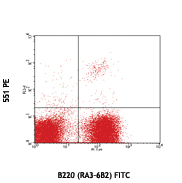
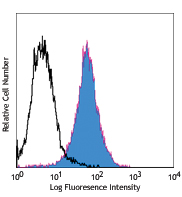
Compare Data Across All Formats
This data display is provided for general comparisons between formats.
Your actual data may vary due to variations in samples, target cells, instruments and their settings, staining conditions, and other factors.
If you need assistance with selecting the best format contact our expert technical support team.
-
Purified anti-mouse CD205 (DEC-205)
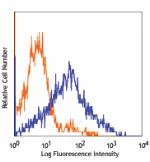
Bone marrow derived-dendritic cells from C57BL/6 mouse stain... -
Alexa Fluor® 647 anti-mouse CD205 (DEC-205)

Bone marrow derived-dendritic cells from C57BL/6 mouse stain... 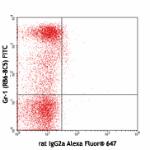
C57BL/6 mouse bone marrow cells stained with Gr-1 (RB6-8C5) ... 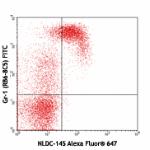
C57BL/6 mouse bone marrow cells stained with Gr-1 (RB6-8C5) ... Fixed whole mount mouse epidermis Langerhans cells were Alex... 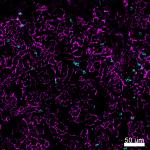
Confocal image of C57BL/6 mouse thymus sample acquired using... 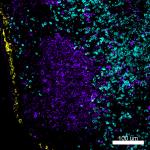
Mice were injected subcutaneously with sheep red blood cells... -
APC anti-mouse CD205 (DEC-205)
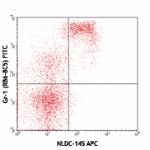
C57BL/6 bone marrow cells stained with Gr-1 (RB6-8C5) FITC a... 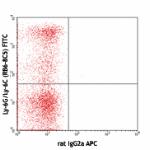
C57BL/6 bone marrow cells stained with Gr-1(RB6-8C5) FITC an... -
PerCP/Cyanine5.5 anti-mouse CD205 (DEC-205)
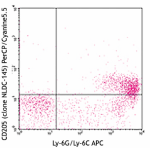
C57BL/6 mouse bone marrow cells stained with CD205 (clone NL... -
PE/Cyanine7 anti-mouse CD205 (DEC-205)

C57BL/6 mouse bone marrow cells stained with CD205 (DEC-205)... -
PE anti-mouse CD205 (DEC-205)
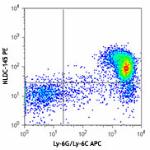
C57BL/6 mouse bone marrow cells were stained with Ly-6G/Ly-6... 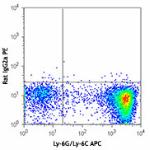
-
Biotin anti-mouse CD205 (DEC-205)

C57BL/6 mouse bone marrow cells were stained with Ly-6G/Ly-6... 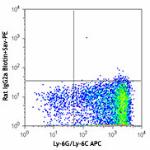
-
PE/Dazzle™ 594 anti-mouse CD205 (DEC-205)
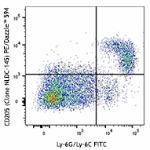
C57BL/6 mouse bone marrow cells were stained with Ly-6G/Ly-6... 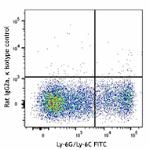
-
APC/Fire™ 750 anti-mouse CD205 (DEC-205)

C57BL/6 mouse bone marrow cells stained with Ly-6G/Ly-6C (cl... -
TotalSeq™-A1010 anti-mouse CD205 (DEC-205)
-
TotalSeq™-C1010 anti-mouse CD205 (DEC-205)
-
TotalSeq™-B1010 anti-mouse CD205 (DEC-205)

 Login / Register
Login / Register 










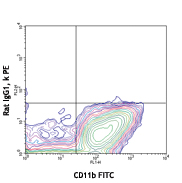
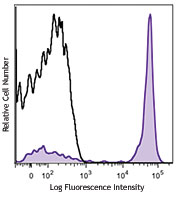




Follow Us